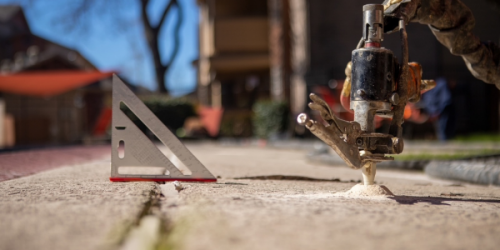Q&A Forums
joist ends Post New Topic | Post Reply
| Author | Comments |
|---|---|
|
Ben Jaeger
Posted: Oct 15, 2010 12:38 AM
|
joist ends
Mason,Ive been doing some joist ends in the basements of existing homes and I have a question. Is it ok to spray closed cell on the water supply lines? Hot, cold, copper or pex? Thanks in advance for the help |
|
mason
Posted: Oct 15, 2010 08:22 AM
|
The topic has come up on this forum before. We responded about PEX as follows: https://sprayfoammagazine.com/mnps/fullthread.cfm?threadid=10381&mnforumid=2&mnboardid=5&startat=1 Question: "We recently checked the temp of closed-cell right after spraying and it got up to 218 degrees. The PEX has a stated temp rating of 180 deg and I would imagine gas lines could be pretty sensitive to heat. In the past we have sprayed a light flash on these, let it cool and flash again. This takes some time to build up the thickness if these lines are in the way. What is your understanding of spraying over these lines and any parameters to follow ?" Thank You Mason Moderator Posted: 12/07/2009 7:31 AM EST Reply | Edit | Ban User Remove Message RE: Spraying gas lines and PEX -------------------------------------------------------------------------------- You have hit on an important item when spraying closed cell sprayfoam. When spraying foam in lift thickness of 1 inch, internal temperatures typically will range from 200 to 220 degrees F. These temperatures are beyond the published "safe" limits for some materials such some plastic pipes and insulation on wiring used for security systems. You can reduce the temperature by spraying less foam on the first pass. But, do not go less than 1/2 inch. Flash passes (1/4 inch or less) are likely to produce foam that does not have adequate mix and consequently have poorer physical properties and adhesion. This also leads to another related problem, spraying too thick can lead to tempertures within the foam ranging up to and beyond 300 degrees F. Temperatures this high can affect the physical properties of the foam and in extreme cases, even cause the foam to combust. High exothermic heat can cause the foam to be dimensionally unstable, have cracks and fissures within the foam and cause strong odors. I have measured high temperatures within freshly sprayed foam in thickness from 2 to 5 inches. It will vary depending on the foam system, substrate temperature, temperature of the liquid foam, etc. So check your foam temperature as it sets up so that you can properly install it without problems. Be sure to measure how long it takes for the foam temperature to begin going down. For most foam sprayed at 1 inch thick, it will take between 5-10 minutes. Thicker applications may take longer for the heat to dissipate. You should not spray foam over foam until the heat within the foam is going down. Installing foam over foam that is still hot can affect its physical properties as well. As for metal pipe, the foam will adhere to it, just remember to not expose the foam to temperatures above 200 degrees F. Other things to consider, it is difficult to remove closed cell foam from around pipes if there is a leak. In cold climates make sure there is more insulation behind the pipes on exterior walls than in front of the pipe (to the interior) to minimize the potential for busted pipes from freezing temperatures. |





























